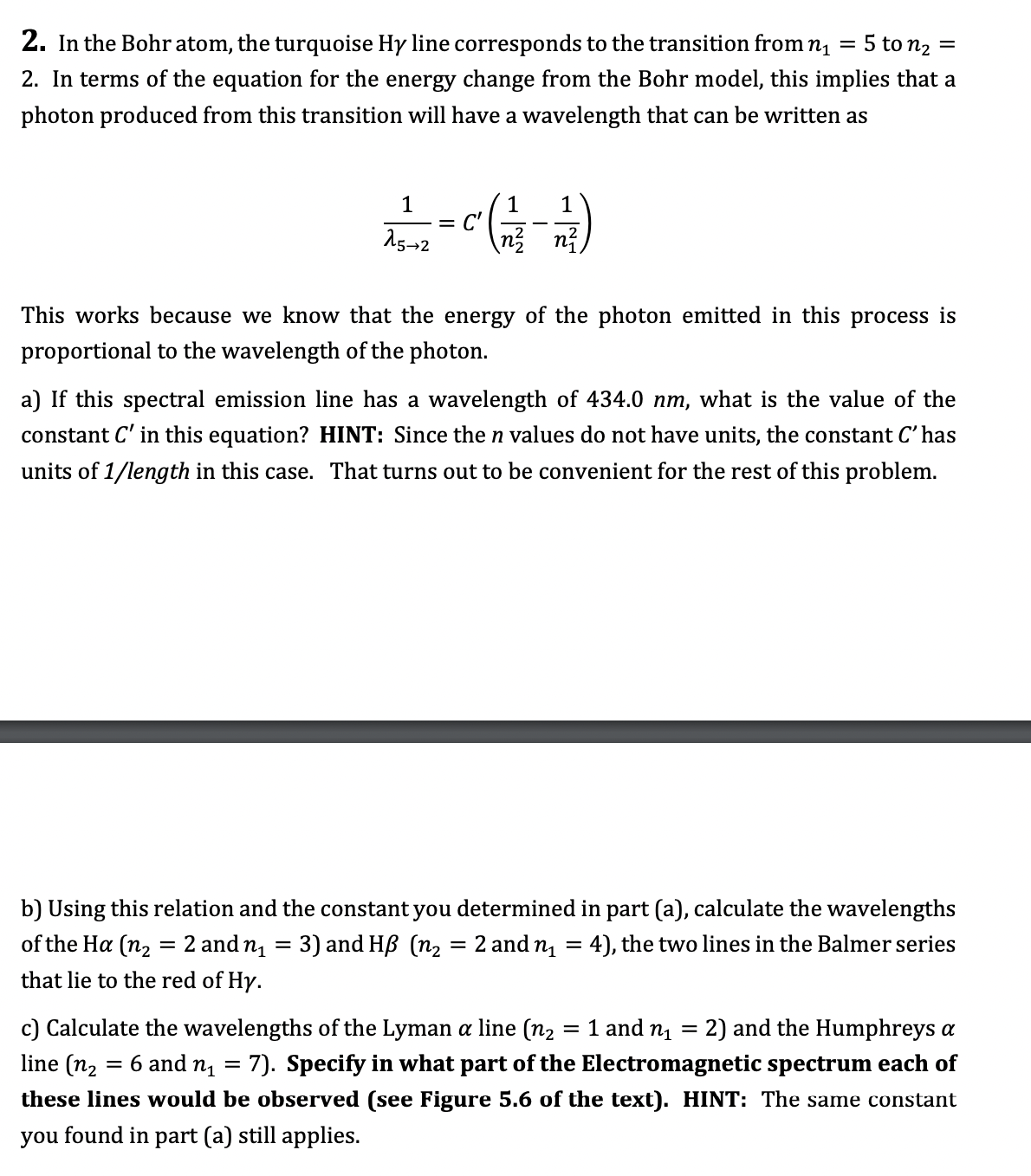Answered step by step
Verified Expert Solution
Question
1 Approved Answer
TranscribedText: 2. In the Bohr atom, the turquoise Hy line corresponds to the transition from n1 = 5 to 712 = 2. In terms of

= 2. In the Bohr atom, the turquoise Hy line corresponds to the transition from n = 5 to n 2. In terms of the equation for the energy change from the Bohr model, this implies that a photon produced from this transition will have a wavelength that can be written as 1 1 1 = 252 n This works because we know that the energy of the photon emitted in this process is proportional to the wavelength of the photon. a) If this spectral emission line has a wavelength of 434.0 nm, what is the value of the constant C' in this equation? HINT: Since the n values do not have units, the constant C' has units of 1/length in this case. That turns out to be convenient for the rest of this problem. b) Using this relation and the constant you determined in part (a), calculate the wavelengths of the Ha (n2 = 2 and n = 3) and H (n = that lie to the red of Hy. 2 and n = 4), the two lines in the Balmer series = c) Calculate the wavelengths of the Lyman a line (n 1 and n = 2) and the Humphreys a line (n2 = 6 and n = 7). Specify in what part of the Electromagnetic spectrum each of these lines would be observed (see Figure 5.6 of the text). HINT: The same constant you found in part (a) still applies.
Step by Step Solution
There are 3 Steps involved in it
Step: 1

Get Instant Access to Expert-Tailored Solutions
See step-by-step solutions with expert insights and AI powered tools for academic success
Step: 2

Step: 3

Ace Your Homework with AI
Get the answers you need in no time with our AI-driven, step-by-step assistance
Get Started


